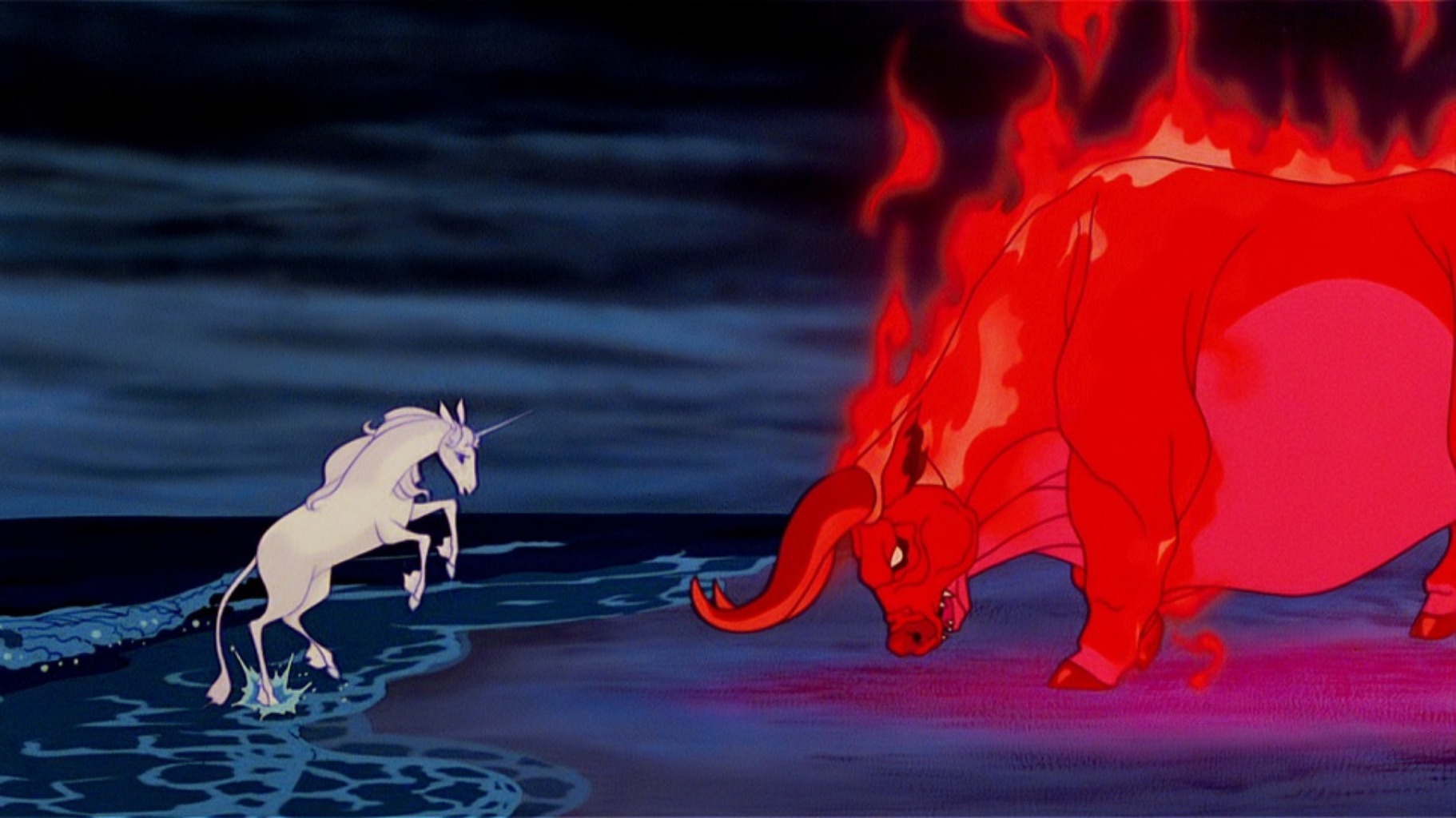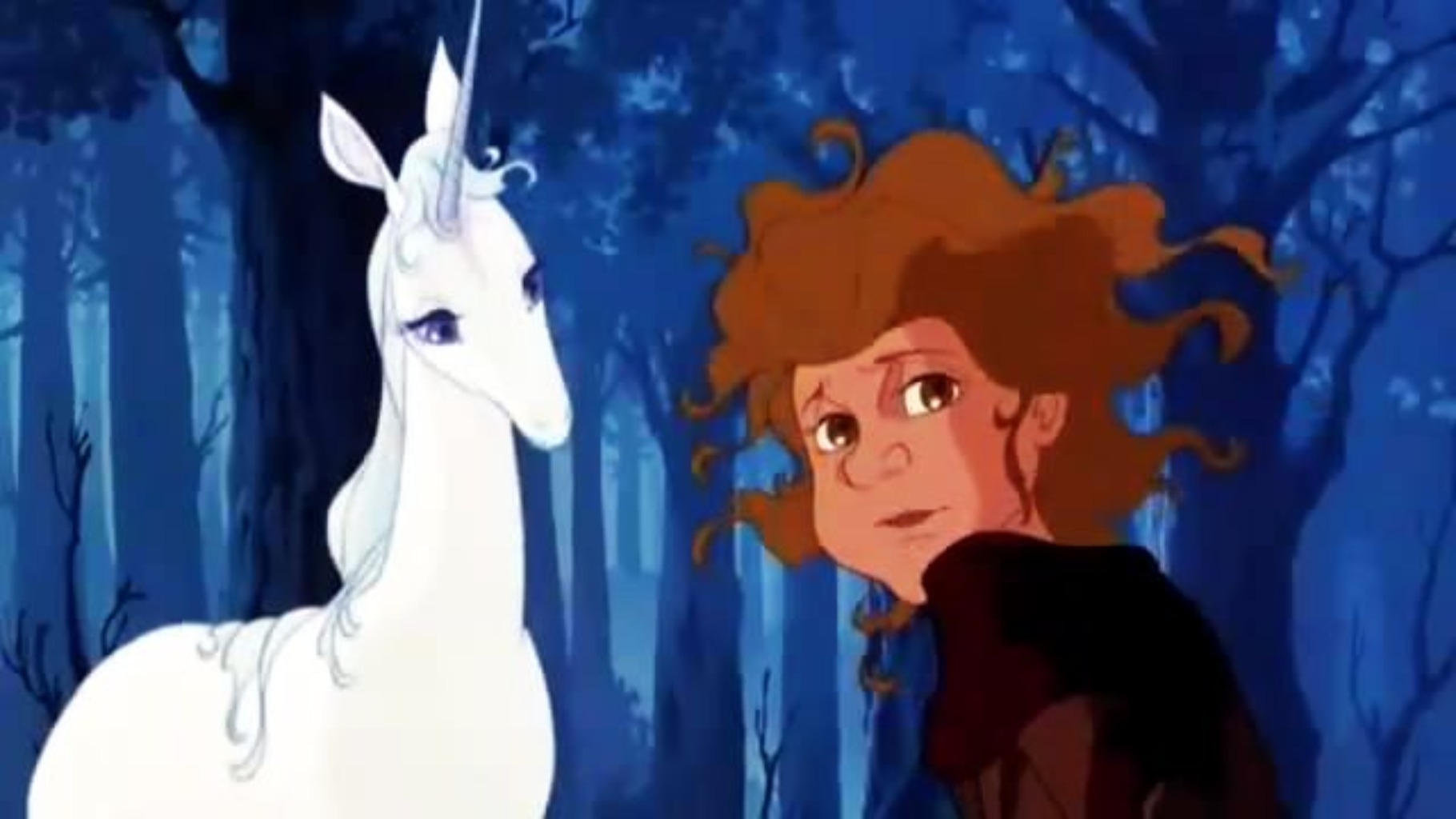
I first read The Last Unicorn by Peter S. Beagle when I was a teenager. I had loved the animated film growing up, having no idea that it was based on a book. As soon as I did, I picked up a copy and devoured it within just a few days. As much as I had loved the movie, I was amazed by how wonderful the book was. Already knowing the fantasy novel’s general story and outcome didn’t mar the reading experience for me at all—the book is just that good.
After several of my books were lost when my mother tried to mail them to me, I recently ordered new copies of many fantasy favorites: Howl’s Moving Castle by Diana Wynne Jones, The Neverending Story by Michael Ende, and, of course, The Last Unicorn. The cover of the copy of The Last Unicorn I received includes a quote by Patrick Rothfuss, known for his bestselling The Kingkiller Chronicle series:
“The Last Unicorn is the best book I have ever read. You need to read it. If you’ve already read it, you need to read it again.”
I decided to take the author’s advice and read the book again immediately. Now that I’ve finished it a second time, I’m more inclined than ever to agree with Rothfuss’s high praise. So I thought we’d take a deep dive on The Last Unicorn this week on the blog while it’s still fresh in my head, and discuss why it inspired a #1 New York Times bestselling author to proclaim it “the best book” he has ever read.

The Title
One mark of a great novel is that the title is evocative and ideally gives the reader some sense of the book. A few of the titles I mentioned earlier succeed in this marvelously—Howl’s Moving Castle tells us both that the book involves someone with an odd name like Howl, and summons the whimsical image of a traveling castle. The Neverending Story has a similar fairy-tale sound to it, and gets the reader asking questions right away. What sort of story could never end?
The Last Unicorn may be the best title of them all, though. Instantly you know that this is a fantasy story that will involve unicorns. You also know that this is the last unicorn. Immediately questions come to mind—what happened to the other unicorns? What must it be like to be the only remaining member of your kind? This title also summons the idea of a quest. If this unicorn is the last one, will she perhaps try to find others of her kind?
Few titles are able to communicate so much in just three short words. This sort of brevity and wit will prepare you for the wonderful writing ahead. Which brings us to our next section!

The Writing
As one of our greatest living fantasy writers, Peter S. Beagle weaves bits of poetic prose throughout The Last Unicorn that make reading it such an absolute delight. Some of these delightful turns of phrase come in the form of similes:
Captain Cully spun like a cat ambushing its own tail. (Page 80)
Molly’s own face closed like a castle against him, trundling out the guns and slings and cauldrons of boiling lead. (Page 99)
These similes do precisely what good writing should—the first gives you such a precise image in your head of the way Captain Gully turns around, and the second shows you Molly’s exact expression in the way a simple “scowl” or “grimace” never could. Not only that, but just this one line gives you a sense of the fierceness of her personality (more on that later).

Here are a few more examples of the incredible language of this novel as Beagle describes the terrifying Red Bull and King Haggard’s castle:
Schmendrick had a last vision of him as he gained the rim of the valley: no shape at all, but a swirling darkness, the red darkness you see when you close your eyes in pain. (Page 143)
The stair coiled tighter and tighter as it ascended, until it seemed that every step turned around on itself, and that the tower was closing on them all like a sweaty fist. (Page 160)
The novel also offers plenty of insightful words of wisdom—some of which come from a talking skull with an alcohol problem:
The clock will never strike the right time … the important thing is for you to understand that it doesn’t matter whether the clock strikes ten next, or seven, or fifteen o’clock. You can strike your own time, and start the count anywhere. When you understand that—then any time at all will be the right time for you. (Page 237)
The skull is speaking of a literal clock here, but these are words I often reflect on in a more metaphorical sense. It’s never going to be the right time to go on that trip, take a course online, or finally write that novel. But when you realize that you are the one in control of your own destiny—that you can strike your own time—then “any time at all will be the right time for you”.

The Characters
In a modern fairy tale such as this one, it would be easy to rely on archetypes and not worry about developing the characters. Instead, Beagle takes those fairy tale tropes and turns them on their heads, coming out with multi-faceted, fully realized people on the other side.
Fairy tales often involve an all-powerful magician. But while he is a magician, Schmendrick is certainly not all-powerful. In fact, he is the laughingstock of the wizarding community. This gives his character a chance to grow throughout the book, rather than spending its entirety as a white-bearded caricature.
Stories that involve unicorns often involve lovely, innocent young maidens. Just in the same way that Schmendrick is not an all-powerful magician, Molly Grue is not a lovely young maiden. She is first introduced as a “thin thorn of a woman” who has “a pale, bony face with fierce, tawny eyes, and hair the color of dead grass”. When she encounters the unicorn, she chastises her for daring to come to her at this stage in her life, rather than ten or twenty years earlier. Molly has far more life and grit than some boring young maiden ever could, and we should all count ourselves lucky that we got her instead.
Out of the central cast of characters, only the unicorn is what one would expect. She is an incomprehensibly beautiful and pure creature who has never known anything but her forest. But when she learns that she is the last unicorn, this sends her on a quest to find the others. Through various trials and transformations, she develops something no unicorn ever has before—humanity.
I can’t recommend this book enough. Like TV shows and movies we’ve talked about before, this is a story you can study to become a better writer. But your first read should just be for fun. Then, as Patrick Rothfuss says, you “need to read it again”.